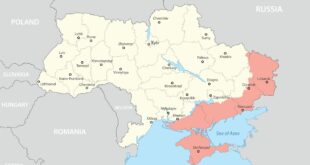Great powers are once again resorting to proxy wars, manipulating weaker nations to fight their battles. This allows them to achieve strategic goals and avoid direct confrontation. Proxy wars, a timeless fixture of geopolitics, have returned amid escalating strategic rivalries. Major powers, avoiding direct confrontation, manipulate third-party forces to advance their agendas in destabilized regions like Yemen, Syria, and Ukraine. Puppet regimes and insurgents clash under the orchestration of distant patrons, enabling great powers to test weaponry, disrupt rivals, and secure strategic positions without risking direct military engagement. This resurgence is no surprise; throughout history, proxy warfare has offered a low risk means for power projection. With nuclear-armed adversaries, the risks of direct conflict are too grave. The real battleground is a shadowy world of alliances, arms shipments, and backroom decisions that determine the fate of nations.
The Shadow Boxers: Major Powers and their Proxies
In the domain of global geopolitics, major powers often engage in proxy wars as a strategic way to further their interests without risking direct military confrontation. This allows them to test military capabilities indirectly by supplying and training proxy groups, secure control over vital resources, and expand their geopolitical influence. Ideological differences, financial considerations, and the desire to maintain a balance of power frequently drive these conflicts. Historical examples like the Yemen war, Syria War, Ukraine war, Korean War, Vietnam War and Afghan War illustrate how superpowers covertly influenced factions, ultimately fueling regional instability. Proxy wars remain a complex and significant part of modern geopolitical maneuvering.
Major powers strengthen their proxy states through multifaceted support, with a particular emphasis on military aid, training, and intelligence sharing. Military aid equips proxy forces with weaponry and logistical resources, strengthening their combat capabilities. Training programs enhance the skills and tactics of proxy fighters, making them a more effective fighting force. Additionally, intelligence sharing provides crucial data for strategic decision-making, allowing proxies to operate with greater effectiveness. This comprehensive support empowers major powers to exert significant influence in regions where direct intervention is undesirable.
Case Studies: Battlegrounds of Proxy Wars
Yemen: A Humanitarian Catastrophe Exacerbate
Yemen has been torn apart by a conflict since 2014 leading to a severe humanitarian crisis driven by internal conflicts and external involvement. The Houthi movement, a Zaidi Shia group, from Yemen initially rebelled against the government seeking improved living conditions and political change. This internal strife quickly escalated into a war when a coalition led by Saudi Arabia intervened to support the overthrown government. The Saudis saw the Houthi advancement not as a threat to Yemen’s stability but as a potential opening for Iran, their regional rival near their southern border. Despite Iran denying control over the Houthis there are allegations of providing them with resources and strategic aid. With this support the Houthis fought back effectively turning Yemen into a battleground for Saudi Iranian competition at great cost to its people. The impact on Yemen has been catastrophic with ongoing conflict causing one of the crises globally. Millions of civilians are suffering from famine, diseases and lack of essentials due to damaged infrastructure from airstrikes. Shelling impedes access to services like food and healthcare. Yamen’s plight serves as a warning about the dangers associated with wars.
Syria: Where Geopolitical Ambitions and Human Suffering Collide
The conflict, in Syria which began in 2011 during the Arab Spring uprisings has evolved into a war where the well-being of the Syrian people is overshadowed by the strategic interests of outside forces. The Assad government, determined to maintain control at any cost received support from Russia and Iran. Russia aiming to secure its position in the Mediterranean and assert its influence provided military assistance that shifted the balance in favor of Assad. Iran, driven by rivalries and a quest for power armed and funded loyalist forces as well as its own allied militias.
On the side a diverse mix of factions emerged with backing from different regional and Western powers with varying objectives. The US concentrated on fighting ISIS while offering aid to rebel groups. Turkey and Gulf nations supported opposition factions based on their interests sometimes conflicting with each other. This fragmented support efforts to form a front against Assad. The immense suffering experienced by Syria highlights the impact of wars. Countless lives have been torn apart by displacement, death, and injuries. Once vibrant cities now lie in ruins, as a reminder of the human toll exacted by power plays.
The heartbreaking situation, in Syria highlights how easily internal conflicts and hopes, for a future can be manipulated by forces leading to a vicious cycle of violence that devastates countries and leaves lasting wounds for years to come.
Ukraine: A Proxy Battleground in Europe
The conflict, in Ukraine which escalated when Russia launched a full-scale invasion on February 24, 2022, has turned into a crisis and a battleground for proxy wars. President Vladimir Putin justified Russia’s intervention by citing “demilitarization and denazification ” resulting in the occupation of territories and a serious humanitarian crisis with numerous civilian casualties and millions displaced. In response Western countries have come together to support Ukraine by providing military, humanitarian aid. The United States has been the leading contributor of assistance pledging over $44 billion since President Biden took office with support from the UK and other allies. This assistance has played a role in Ukraine’s defense and efforts to push back against Russia resulting in the recapture of substantial territory. The conflict serves as an example of wars where external powers back forces to pursue their strategic goals indirectly without direct confrontation as highlighted in studies conducted by RAND Corporation. The situation in Ukraine highlights the interplay among power dynamics, influence strategies and warfare tactics in the era where major powers engage in indirect conflicts with broad implications, for global security and stability.
The Human Cost and Global Repercussions
Devastating Human Cost
The human toll of proxy wars is a grim testament to the devastating impact these conflicts have on civilian populations. In the shadows of geopolitical maneuvering, the real and immediate consequences for those caught in the crossfire are catastrophic. Civilian areas, including homes, schools, and hospitals, often become battlegrounds, leading to a high number of civilian casualties, as seen in Syria, Yemen, and Ukraine. Beyond the loss of life, millions are displaced, losing their homes and communities, which in turn strains resources and destabilizes neighboring countries. The destruction extends to the very infrastructure that supports life. In Yemen, the war has precipitated a near-famine state for many, exacerbated by blockades and the destruction of vital infrastructure. Outbreaks of diseases like cholera and a collapsed healthcare system compound the suffering. Ukraine’s conflict has disrupted its role as a major agricultural exporter, affecting global food stability. The enduring consequences of proxy wars on civilians are profound, leaving behind broken families, destroyed cities, and long-lasting wounds that hinder recovery efforts long after the conflicts have ceased. The international community’s response must encompass not only immediate humanitarian aid, but also long-term initiatives aimed at healing the deep scars left by these wars.
Broader Global Repercussions
Proxy conflicts have impacts that go beyond the regions of strife triggering instability, in neighboring areas heightening tensions among major nations and hindering efforts towards lasting peace. These battles act as breeding grounds for unrest with the influx of arms and external assistance prolonging and convoluting the disputes. The tragedy unfolding in Syria, where a complex proxy war has ravaged the nation and reverberated throughout the Middle East exemplifies these repercussions. Similarly, the conflict in Yemen driven by the rivalry between Saudi Arabia and Iran has not led to a humanitarian crisis but also deepened divisions in the region. The danger of proxy conflicts escalating into clashes involving powers looms large. The support provided by countries to opposing factions can trigger a cycle of reprisals as evidenced by NATO and Russian involvement in Syria underscoring this potential for escalation. Proxy wars foster an environment of escalation without resolutions heightening the risk of broader and more devastating conflicts. Finding solutions to wars is significantly hindered by external meddling. When major powers arm and back proxies with resources it often encourages them to seek triumphs, over concessions complicating efforts to reach agreements that tackle the causes of strife.
A Game with No Winners: The Future of Proxy Wars
Proxy conflicts remain an aspect of politics serving as a superior method for major powers to expand their influence without direct military engagement. These disputes often involve a mix of interest’s ideological battles and regional power dynamics with powerful nations backing groups to achieve strategic goals. The ongoing importance of wars is evident in their impact on stability, worsening humanitarian crises and the challenge they pose to international norms like sovereignty and non-interference. Looking ahead to the future of proxy conflicts raises questions about how the global community can handle and resolve issues effectively. How can we strengthen the framework to address the unique challenges presented by proxy warfare? What role can international organizations play in this process? Are there economic incentives that could encourage powers to seek peaceful solutions to their rivalries? Additionally, how can we. Promote norms or frameworks that prioritize conflict prevention and peaceful dispute resolution while addressing the security concerns of all involved states?
 Geostrategic Media Political Commentary, Analysis, Security, Defense
Geostrategic Media Political Commentary, Analysis, Security, Defense





